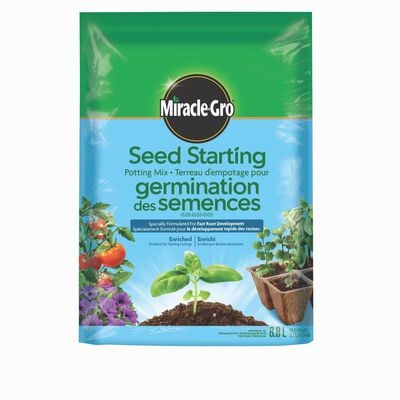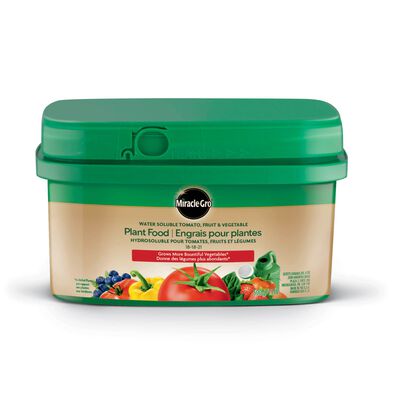
Planting, Growing & Caring For a Tomato Plant From Seeds
Seed Grown Tomatoes
Tomatoes are more than just a hearty vegetable. Growing them is practically a rite of passage for serious and recreational gardeners alike. You get to show them off as well as eat them, and learning how to grow them successfully will really bolster your gardening skills. These simple steps will help you grow tomatoes from seed and help ensure your tomatoes are among the biggest on your block.
1. Start from Seed
Maybe you want to get a jump on the growing season. Or maybe you want varieties that you can't find at the gardening center. Either way, starting tomatoes from seed is the ideal way to enjoy growing this fruit. Standard beefsteak tomatoes are great. But there are many varieties of tomatoes, including cherry, yellow and heirloom, and they all offer different colors, sizes and flavors. Greater variety is a good reason to grow tomatoes from seed rather than starter plants. This gives you more control and usually ensures a healthier crop.
2. Plant Your Tomato Seeds
Plant your tomato seeds in small containers such as egg cartons or Styrofoam cups, two seeds to a container. Use a seed starter mix such as Miracle-Gro® Seed Starting Potting Mix, a lightweight mix that will encourage fast root growth. Fill your containers with the potting mix and then add water until it's the consistency of a wrung-out sponge. Plant seeds about 1/8 inch deep and press on the soil a little to make sure the seeds have sufficient contact with the soil. Cover loosely with plastic wrap to conserve moisture, and place your seeds in a dark, warm location, preferably between 70°F to 80°F. When your seeds start sprouting, usually within 1 to 2 weeks, move them to a sunny spot or under artificial lights. When their first leaves appear, transfer them to larger containers, such as 16-oz plastic cups with holes poked in the bottom.
3. Prepare Your Tomatoes for the Outdoors
Prepare, or harden off, your tomato seedlings for outdoor conditions. This means introducing them slowly to the elements they'll find outside. Place them outside for a few hours a day in an area protected from wind and direct sun, and bring them inside in the evening or whenever temperatures below 50°F are forecasted. Repeat this every day for 10 to 14 days. For windier and less temperate days, you can also purchase cold frames from a garden center or home improvement store, or make your own protectors using plastic sheeting.
4. Prepare Your Tomatoes to the Ground
An old adage says: "tomatoes have fun in the sun, but fade in the shade." For all tomatoes, the more sun, the better. When it's time to put them in the ground, ideally about 2 weeks after your last frost date, mix in a big helping of high-quality garden soil, such as Miracle-Gro® Garden Soil All Purpose 0.09 - 0.05 - 0.07 or Miracle-Gro® Organics Garden Mix for Vegetables and Herbs. Add a 3-inch layer of mulch, such as Scotts® Nature Scapes® Colour Enhanced Mulch around your tomato plants to help conserve soil moisture and keep weeds at bay. Keep the mulch at least 6 inches away from your tomato plants.
5. Water and Feed
Feed your tomatoes with an appropriate plant food such as Miracle-Gro® Water Soluble Tomato, Fruit & Vegetable Plant Food, as like most plants, they will be especially hungry for nutrients during the first few weeks in the soil. Water them daily. After they're established, be sure to water your plants regularly and feed every 2 weeks. Use a simple soil test by dipping your finger about one inch into the soil to determine moisture levels closer to the roots. Take note of any signs of wilting in the plants' leaves
6. Harvest Your Tomatoes
Generally, you can expect to see fruit appear between 45 and 90 days after planting. Ripeness is usually determined by rich colors and a slight softness. But be careful, as you don't want the tomatoes to become overly ripe, which can result in a very soft tomato. Now you're ready to pick and eat, share and show off your bounty.
7. Keep Your Tomato Plants Healthy
Don't forget to water regularly to keep the soil from drying out. Tomatoes love water, and one of the biggest reasons for decline in tomato plants is lack of moisture. You'll be amazed at how your plants respond to plant food, so feed them regularly, too. If some branches grow near or on the ground, snip them off to prevent disease. Also, quickly remove any tomatoes attacked by bugs or worms. You don't want to encourage them.


